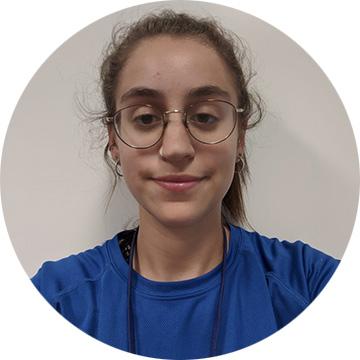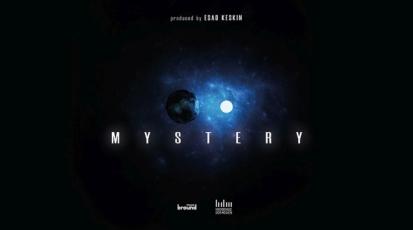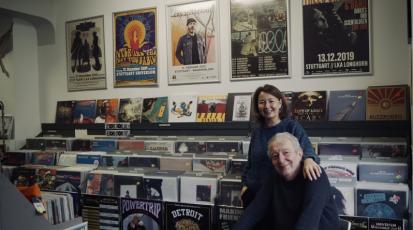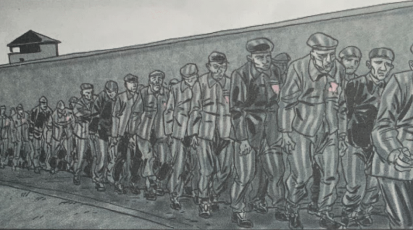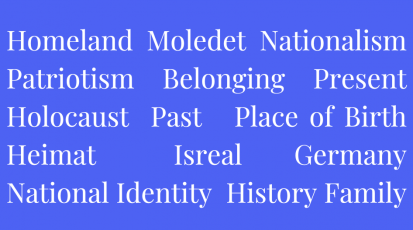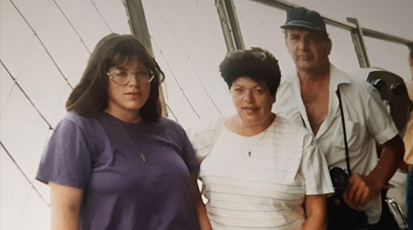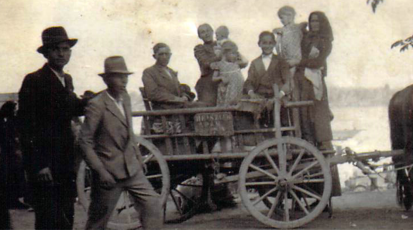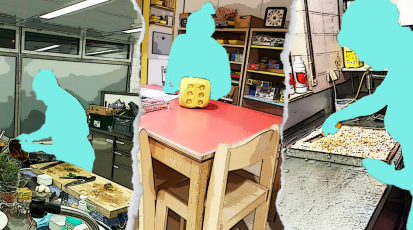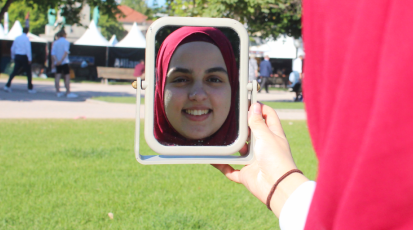“Yossel” – the boy who fictionally survived the Holocaust
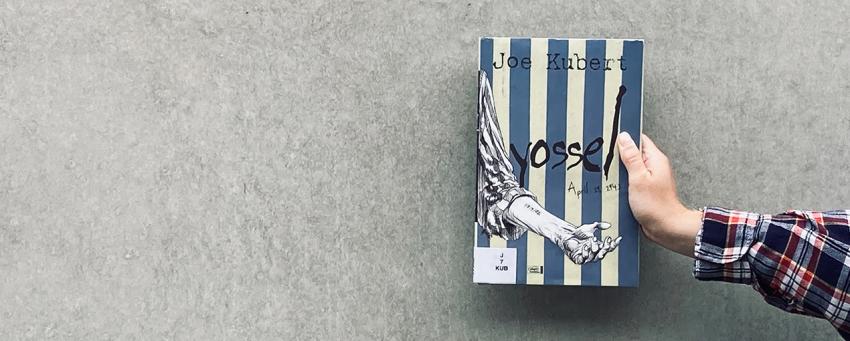
In 2003, U.S. comic book author Joe Kubert published the graphic novel "Yossel." A book that tells the fictional story of a Jewish boy from 1941 who lived in the Warsaw ghettos during the Holocaust. An emotional story full of inhumanity and cruelty during the Second World War. Yossel, the name of the young protagonist, is artistically gifted and, despite all the blows of fate, develops a strong will to survive, sketching his experiences and the horrible images on paper.
Joe Kubert himself comes from Poland, from where he emigrated with his family to the USA in 1926. For this reason, he describes his work "Yossel" as "a fictional story based on an actual nightmare," a "result of my 'how it would have been' thoughts." The author puts himself in the position of the protagonist and, through his choice of rough illustrations in pencil, portrays a high emotionality to his drawings.
The approach of Kubert already pointed out a dilemma in 2003, which is becoming more and more conscious nowadays. One day there will be no survivors of the Holocaust among us. But how to keep alive the culture of remembrance for an event that should never happen again?
The fine line between real and fictional memories
After diving into the world of ‘’Yossel’’, the different forms of memory culture and the politics surrounding this topic can be captured. Avishai Margalit, a professor emeritus of philosophy in Israel, wrote extensively about “The ethics of memory”, which may assist with a clearer perspective on this matter.
The essence of his writings introduces two kinds of ‘’memory relations’’. One relation –’’thick relations’’ revolves around the memories that can be shared by close surroundings, such as friends, family, religious group or national community. The second relation that he introduces –’’thin relations’’ revolves around the memories that can be shared with people that are a part of their close surroundings, people that the only thing they may have in common with them is the fact that they are both human. During the Holocaust, over 6 million Jews, Sinti and Roma were erased. Graphic Novel artists like Joe Kubert try to keep the victim’s stories alive and current.
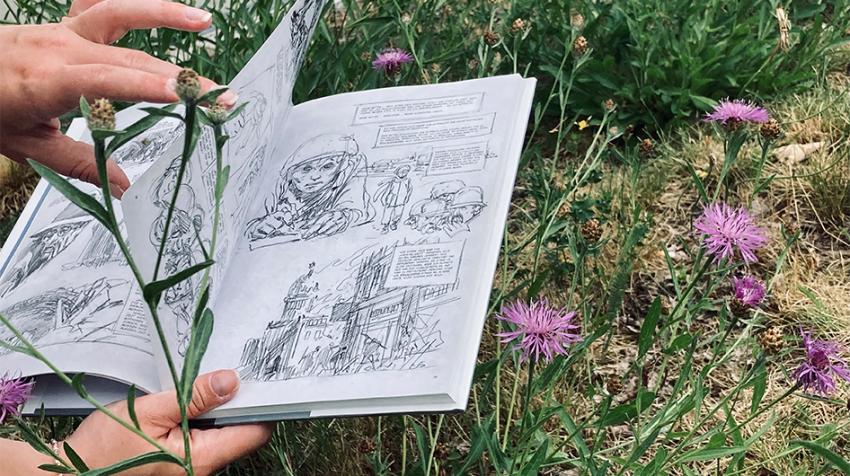
The perspective of memory culture
Just like memories, Holocaust stories are told selectively, from a particular point of view. Factors such as a changed system, migration or separated or destroyed families influence the memories. This is the same with the story of Kubert, since he and his family went to the United States and him not being sure what would have been, if they hadn't left Poland. By telling the stories over and over again, the surviving witnesses may also serve as a way of coping with trauma, so that the story may change somewhat from time to time, not intentionally. It is also important to remember that family stories from the time of the Holocaust can also focus on what they wish they had done during that time. They may omit things that obviously took place. Compared with the stories from the books, there are not always differences, but often differences. This does not necessarily mean that the truth was deliberately concealed, only that there are aspects and points of view that are perhaps not retold in the family stories. So “Yossel” is also only part of the truth. Joe Kubert tells the fictional story of a boy who survived the Holocaust. Many aspects may have happened similarly in other families, but it remains a contrived retelling.
Ephraim Mol is a survivor of the Holocaust. He was nearly five years old when his parents were sent to Auschwitz. Ephraim survived by being adopted and hidden by a Catholic Parisian woman. From a very young age, Ephraim had a passion for drawing. Before he retired, he illustrated over six children books.
Graphic novels also play with the selectivity of a story. Depending on the perspective from which one tells the story, the setting or the image detail used for the respective scene, this influences the reader in a predetermined way. In "Making Comics" by Scott Mccloud, the author discusses the creative freedom and design possibilities of comics and graphic novels. Design Possibilities, Kubert used as well.
The power of the drawings
There are many possibilities through the combination of images and text. It is as if the message is multiplied by the two-dimensionality of the transmission of information. What cannot be described with words is described by the image and vice versa. Furthermore, one of the great advantages of the medium Julia Abel and Christian Klein tell in their book “Comics und Graphic Novels Eine Einführung” is that it combines the factual with the entertaining, in keeping with the classical literary motto "prodesse et delectare". Because of the many pictures, there is a larger target group, including younger people, or people who would rather avoid large text-laden books. Also, Michael Kichka, author of the Graphic Novel “Second Generation” mentions this aspect in our Interview.
Michel Kichka is one of Israel's leading comic book artists and political cartoonists. He was born in Belgium and immigrated to Israel in 1974 and studied art at the Bezalel Academy. There he trained talents in the field, including Rutu Modan and Uri Fink. Kichka also produces comics in French and Hebrew. His graphic novel “Second Generation” that was published in 2014 is about his life as the son of a Holocaust survivor.
Graphic novels like Joe Kubert’s “Yossel” build a kind of bridge across generations and countries. Even if you don't speak the language, you understand roughly what it's about through the many scenes. Readers get a better understanding of the characters in the story as you get insight into thoughts and a better sense of the protagonists' lives and surroundings.
Joe Kubert created with “Yossel” a very emotional, dramatic and harrowing work that brings another horror about the time of the Holocaust. Even though the author himself was not a witness to these atrocities, he still manages to vividly portray the images. How this will look in the future, without living witnesses among us, is unclear. What is certain, however, is that with works like these, a time like that will never be forgotten.




